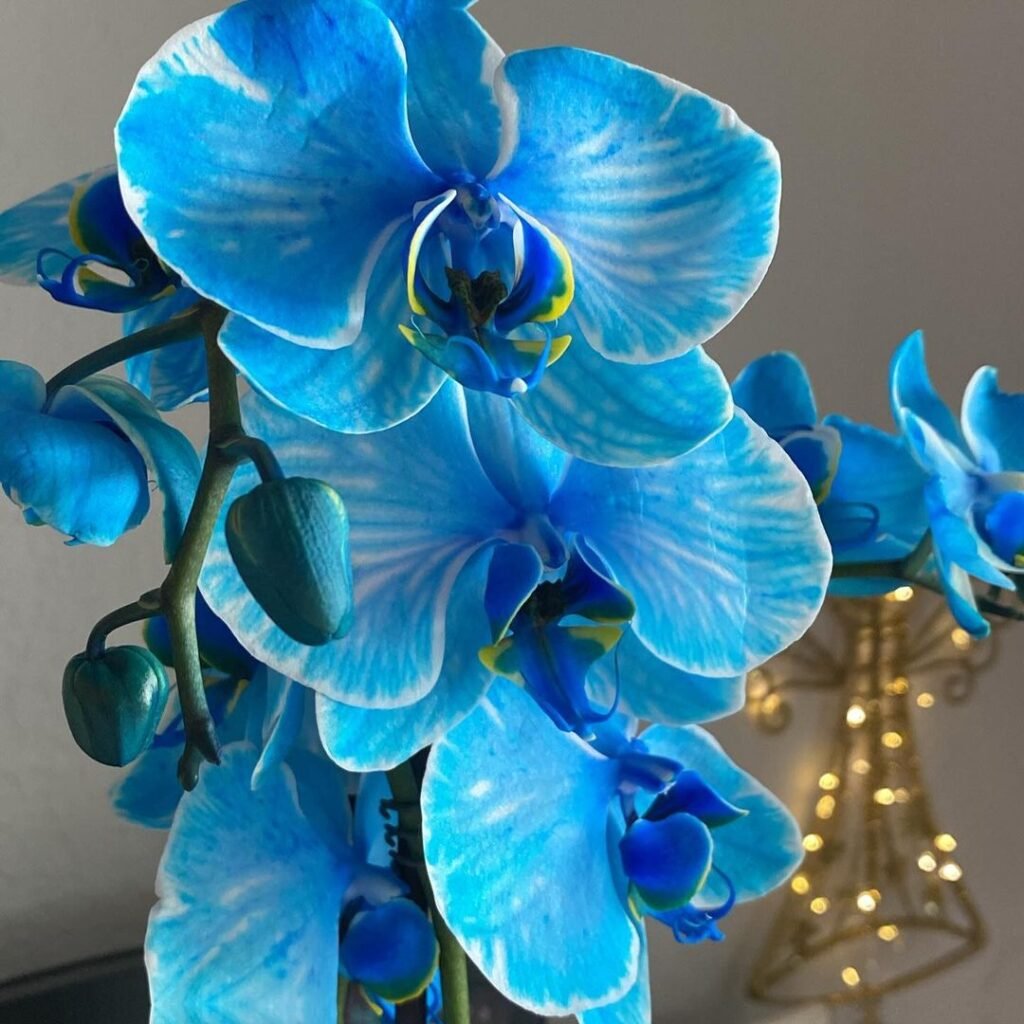Blue orchid, also known as Autumn Lady’s Tresses, Sapphire Vanda or Queen of the Sky, are exquisite but require meticulous care. It’s crucial to provide high humidity with good air circulation, bright but indirect light and a stable, warm temperature. This guide covers everything from watering and fertilization to pruning and propagation, offering tips for successful cultivation and common pest management.
Blue orchid, also known as Autumn Lady’s Tresses, Queen of the Sky, Sapphire Vanda or Blue Bean-Orchid, are absolutely stunning but can be super tricky to grow. They need pretty specific conditions to thrive that can be a handful even for seasoned gardeners. Think of it as keeping a picky friend happy—it’s all about getting the details right. Let’s dive into how to care for these beauties!

Here’s a comprehensive and easy-to-read information chart for the blue orchid:
| Category | Details |
|---|---|
| Botanical Name | Dendrobium (Note: Several species and hybrids are blue) |
| Common Name | Blue Orchid |
| Plant Type | Orchid |
| Hardiness Zone | Typically Zone 10-11 (can vary depending on species) |
| Sun Exposure | Bright, indirect light (can tolerate some direct morning sunlight) |
| Soil Type | Well-draining orchid mix (typically a combination of bark, perlite, and sphagnum moss) |
| Watering | Keep moist but not soggy; water when the top inch of soil feels dry; reduce watering in winter |
| Growth Habit | Epiphytic (grows on other plants or trees in nature) or lithophytic (grows on rocks) |
| Height/Spread | Height: 12-24 inches (30-60 cm) / Spread: 6-12 inches (15-30 cm) |
| Special Features | Showy, vibrant blue flowers; can have a pleasant fragrance; prefers high humidity |
Keeping it Humid and Breezy
Blue orchids love high humidity but they also need good air circulation. Imagine the moist, misty forests where they come from—replicating that vibe at home is the goal. Aim for 70-80% humidity and ensure there’s plenty of fresh air. You can use a humidity tray or a humidifier and keep them in a well-ventilated spot.
Soak Up the Right Kind of Sun
These orchids are like the Goldilocks of the plant world when it comes to sunlight. They want bright but indirect light—not too harsh and not too dim. Near an east or south-facing window with a bit of filtered light is perfect. If you’re growing them indoors and winter’s stealing all the sunlight, consider using grow lights.
Warm and Stable Temps
Blue orchids prefer a consistent temperature range of 60-80°F (16-27°C). They don’t like sudden changes in temperature, so keep them away from drafts, air conditioners and heaters. Consistency is key here; dramatic temperature swings can stress them out.
Water Wisely
Watering blue orchids can feel like walking a tightrope. They need to dry out a bit between waterings. Overwatering can cause root rot and underwatering can dry them out. The trick is to water them well, let it drain out completely and then wait until the top inch of medium is dry before watering again, typically once a week.
The Right Mix
Unlike most plants, blue orchids don’t grow in regular soil. They need a special orchid mix that ensures good drainage and airflow around the roots. Look for a mix that includes bark, perlite and charcoal—this mimics their natural growing conditions.
Feed Them Right
Regular feeding is crucial for blue orchids. Use a balanced, water-soluble fertilizer (like 20-20-20), but dilute it to half strength. During the growing season (spring and summer), fertilize every two weeks, and in fall and winter, cut back to once a month. Over-fertilizing can burn the roots, so less is more here.
Trim and Propagate
Pruning helps keep your blue orchid healthy and encourages new growth. Remove spent blooms and any dead or diseased leaves. Make sure your tools are sterilized to avoid spreading disease.
If you want more blue orchids, you can propagate them by dividing large clumps of pseudobulbs or using keikis (baby plants). Wait until the keikis develop roots and leaves before potting them separately.
Repotting Time
Repotting is like giving your blue orchid a fresh start. Do this every 2-3 years or when the growing medium breaks down. Spring is the best time to repot, just after they’ve bloomed to minimize stress.
Watch Out for Pests and Diseases
Common pests like mealybugs, aphids and spider mites can attack blue orchids. Treat them with insecticidal soap or neem oil. Regularly inspect your orchids to catch any infestations early. Be aware that high humidity and poor air circulation can lead to fungal and bacterial infections, so maintaining good cultural practices is crucial.
Enjoying the Blooms
When they bloom, blue orchids are breathtaking! The flowers usually appear in spring, summer and fall and can last for several weeks. They bring a splash of exotic beauty that’s sure to brighten up any space.
Wrapping It Up
Growing blue orchids may be challenging, but it’s incredibly rewarding. These plants demand attention to detail, but if you get it right, they’ll reward you with stunning, sapphire-blue flowers. Just remember: high humidity, good airflow, bright indirect light and consistent watering are the key ingredients to success.
So, roll up your sleeves and get ready to pamper your blue orchid. Happy growing!
By taking care to replicate their natural habitat and paying attention to their specific needs, you can enjoy the unparalleled beauty of blue orchids at home. With patience and dedication, you’ll be rewarded with their gorgeous blooms. Happy gardening!